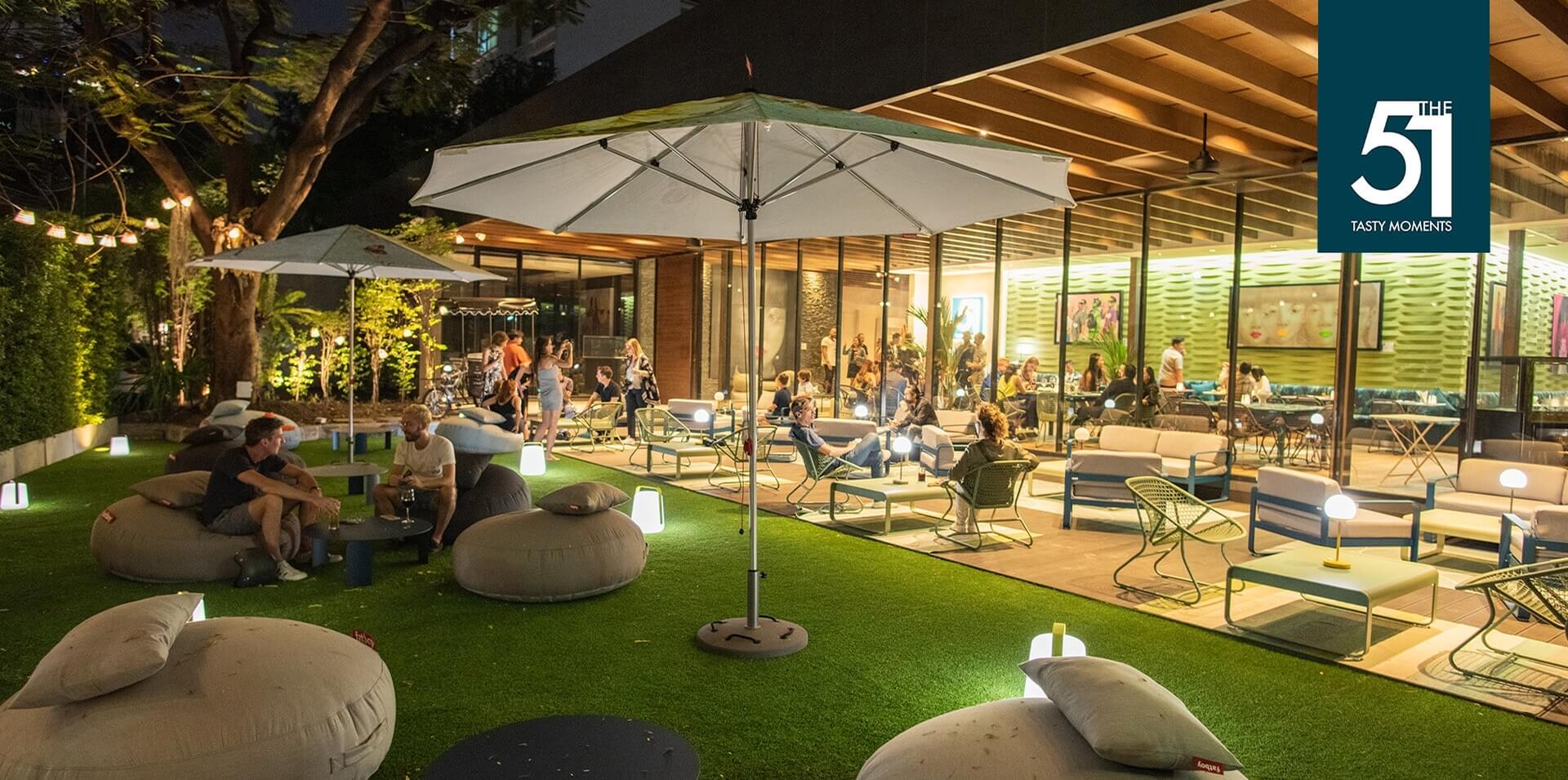







DEVELOPMENT
DESIGN
AND TRAINING
PLANNING
SUPPLY MANAGEMENT
CONSULTANCY
MANAGEMENT
OPERATIONAL SUPPORT
SELECTION
JUST INSIGHT

Why Small Plates Are The Next Big Thing
Dining out offers consumers the oppurtunity to enjoy foods they might not eat on a regular basis. It also allows them to try new foods should they want to. But dining out isn’t always an adventure or an indulgence-sometimes people are just hungry and want a quick, tasty bite to eat.

The uber-ization of staffing
The ability to hire temporary staff with a few taps on an app is helping Dimitra Murphy drive more revenues at her business...

Guide to the global generation of customers
Just when you’ve finally got your millennial customers figured out, a new generation—with new expectations and new tastes—starts showing up at your door. Meet Generation Z, the group of 23 million babies, kids and young adults born between 1996 and the present. They’re practical, tech-driven and culturally diverse. And in plenty of ways, the complete opposite of their older cohort.
Why Small Plates Are The Next Big Thing

Dining out offers consumers the oppurtunity to enjoy foods they might not eat on a regular basis. It also allows them to try new foods should they want to. But dining out isn’t always an adventure or an indulgence-sometimes people are just hungry and want a quick, tasty bite to eat.
With all these reasons for dining out, operators have a tall order. They have to provide new and interesting dishes, exciting, trending flavors and portions that fit all appetites. Enter the small plate-a smaller-sized portion of foods diners know and love, as well as ones they’ve yet to experience.
According to Technomic’s 2017 Starters, Small Plates & Sides Consumer Trend Report, about one in five consumers (%19) say they purchase small plates at least once a week, and though they’re sometimes shared, %59 of consumers say they eat them by themselves.
Why small plates?
Small plates have gained speed in the restaurant industry for a variety of reasons. Consumers want to try a particular small plate, they want to try several different dishes, they want something to eat while they wait for their meal, and theyre less expensive than entrees. For diners who are extra hungry, small plates are perfect for tiding them over ‘til their meal gets there. And for diners with snack-sized appetites, small plates are great to ensure they don’t over-order. In fact, %37 of consumers say they think small plates are a better value, according to Technomic’s 2017 Starters, Small Plates & Sides Consumer Trend Report. They’re also ideal for consumers who want to try something new but don’t want to be stuck with something they don’t like. Because small plates come at lower price point and are offered in a smaller portion, there’s less risk. Indeed, %51 of consumers say they are more willing to try a new flavor or ingredient in a small plate than in an entree.
restaurantbusinessonline.com
The uber-ization of staffing

The uber-ization of staffing
Mobile apps match temporary workers to the need of operators Mark Hamstra | Mar 08, 2017
The ability to hire temporary staff with a few taps on an app is helping Dimitra Murphy drive more revenues at her business.
Murphy, the owner of Daddy Jones Bar, a Greek restaurant and lounge in Somerville, Mass., has been using a mobile application called Jobletics to find workers when she needs them, whether its to replace someone whos called in sick in the kitchen or to staff a catered event.
“There are times when wed accept a catering job, but in order to do it I would have to put all of my staff on overtime, or take people away from the restaurant and be short-staffed,” she says. “But now I can do it and still be growing my business, without affecting my dinner operations.”
Founded in March of last year, Jobletics specializes in the restaurant industry, and has been growing its employee base rapidly. It currently serves “a couple hundred” restaurant companies in the Boston area, providing both front-of-house and back-of-house workers. It charges a flat rate per shift.
Advertising, mouse over for audio
Jobletics is among a handful of app-based solutions that have emerged to help operators such as Murphy find the temporary workers they need quickly and easily. The services — similar to Uber, the popular car-hailing app — leverage algorithms that match qualified workers to available positions almost instantly.
Mobile-based staffing apps are rapidly gaining users in the hospitality industry, where employment issues can give operators headaches. Restaurateurs and caterers praise the apps for their ability to secure qualified help quickly and easily.
“When someone calls in sick, I just plug in what I need, and three hours later they show up,” says Murphy. “It has been a huge help.”
Murphy uses Jobletics — whose workers are called “jobletes”— about three or four times a month, she says. She mostly hires jobletes to fill
back-of-house jobs such as dishwashers and line cooks, but shes also used the service for front-of-house workers and for her catering business.
Similarly, Blake Irving, manager of Black Barn in New York City, says he uses the temp-talent app Jitjatjo for both planned special events and lastminute staffing needs.
“Jitjatjo allows Black Barn to take on additional business beyond our normal staffing limitations,” he says. “Weve used it to facilitate large events, as well as events that are scheduled at ‘off times, when finding staff would normally be difficult.”
Careful screening
One of the keys to operator acceptance of the new apps is that the app companies have been screening their workers carefully.
“I know that quality is of paramount importance to these employers, and we have to make sure we have the vetting procedures in place so that we are only sourcing the best and brightest people,” says Rahul Sharma, CEO of Boston-based Jobletics, which he said rejects 90% of applicants.
Potential Jobletes go through a proprietary vetting procedure that assesses applicants according to cognitive and behavioral criteria as well as actual labor skills.
Sharma, who grew up in a family that operates retail and foodservice business in California, launched Jobletics in March of last year.
Jitjatjo launched in October, and has more than 350 restaurants in the New York City area that have signed up. About 4,000 workers were using the service, which uses a “push” model — matching the best available employee to the available position, rather than leaving its workers to select available shifts.
“We want to help both sides,” he said. “We want to help employers control the turnover issue, as well as help employees who love the industry to be able to have autonomy and accountability themselves.”
Lauren Gottfried, café manager and catering manager at Rebeccas Café at the Harvard Graduate School of Education in Boston, says she prefers hiring Jobletes over using a traditional temp agency.
“I like that we know whos coming, and we have their phone number,” she says. “And most of the time we are seeing familiar faces, so they know our kitchen, they know where everything is, and they know what they are getting into.”
Simplified employment structure
Operators also appreciate the structure of the employment relationships when they hire through the apps. The app companies pay the workers, withhold taxes and assume all the other responsibilities involved with
having workers on the books. Operators pay the app companies a fee above what the workers are earning.
Wonolo, another mobile app that seeks to match workers with employers for temporary gigs, screens its workers carefully for desired character traits, says AJ Brustein, cofounder and chief operating officer of the San Francisco-based company. Potential “Wonoloers” go through a threestep application process: first they take a test within the app, then they undergo a background check and then they are interviewed.
“We are more concerned with attitude over aptitude,” says Brustein.
He feels that for many of the entry-level positions that Wonolo seeks to fill, its workers can learn on the job. They can also earn “badges,” which recognize specialized knowledge or certification, such as one for safe food handling.
Lisa Elliott, director of events at the Yerba Buena Center for the Arts in San Francisco, says almost all of the Wonoloers she has hired “show up with a really positive attitude.”
“They are hungry,” she says. “When they come in here, they are eager to work.”
Wonolo (an abbreviation for “Work. Now. Local.”) was founded in 2014 to supply workers to help keep Coca-Cola in stock on retailers shelves. It branded out into hospitality, and now serves eight markets: Northern California; Southern California; the New York metro area; Philadelphia; Chicago; Columbus, Ohio; Tamp Bay, Fla., and Dallas. It employs 30,000 Wonoloers and is working with some 700 employers.
The center, which houses concession facilities and a café and frequently hosts catered events and pop-up facilities, often hires Wonoloers as temporary staff to help cope with the fluctuation in labor demands.
“Sometimes we have last-minute things where all of a sudden we need 10 people tomorrow,” says Elliott.
Among the things she likes about the service are the fact that she can communicate directly with the Wonoloers as soon as they accept a job, so that she can ensure they are the right fit for the job — something thats not possible with the traditional temp agencies she has used.
In addition, she likes the fact that she has become familiar with some of the Wonoloers and can request the workers she favors for certain jobs.
In fact, one of the few disappointments operators report in using the apps is that they sometimes cannot hire the specific worker they want because they have accepted another gig. Operators say they very rarely have been unable to fill a position, however.
New model
Jitjatjo, which is available the New York City area, is one of the newest app providers in the hospitality employment space. It uses what chairman and co-founder Ron McCulloch called a “pull” model of matching its workers to the companies that need them, rather than a “push” model.
“We dont broadcast the opportunity across the user group,” he explains. “We do an internal analysis, and actually select the best individual for
each role, and allocate the job to them.”
Jitjatjos workers communicate their availability to the company regularly, and Jitjatjo weighs their proximity, their work history with Jitjatjo and other data to align them with employers needs.
“This does two things,” says McCulloch. “It maintains quality, and it is very fast.”
McCulloch, who had a long career in restaurant design before he began focusing on technology, launched Jitjatjo last October. He cites maintaining operator trust as a key to the success of talent-sourcing apps.
“In years gone by, the first thing [operators] were usually doing was trying to keep a real close eye on the talent they were bringing in to their establishment,” he says. “So as they give that trust over to our hands, we need to keep proving that we provide quality on a consistent basis.”
Correction: March 10, 2017
This story has been edited to correct the number of workers and restaurants participating in the Jitjatjo service.
Guide to the global generation of customers

Are you ready for Gen Z?
The youngest generation is everything millennials aren’t. Here’s what they’re hungry for.
Just when you’ve finally got your millennial customers figured out, a new generation—with new expectations and new tastes—starts showing up at your door. Meet Generation Z, the group of 23 million babies, kids and young adults born between 1996 and the present. They’re practical, tech-driven and culturally diverse. And in plenty of ways, the complete opposite of their older cohort.
Sure, plenty of Gen Z’ers are still too young to buy their own meals and snacks — or even tie their own shoes. But the oldest among them are in high school and college. And within five years, they’re predicted to become the fastest growing generation in the marketplace and workforce. “Members of Generation Z are now the trendsetters. They’re the ones driving the trends that millennials will adopt,” says Jason Dorsey, founder of the Center for Generational Kinetics, a millennial and Gen Z research firm.
Here’s a look at what they’re all about, and how to meet their mealtime expectations.
The anti-millennials
Unlike millennials, Gen Z’ers are too young to remember the changes brought about by 9/11 or the financial crash. Instead, they were born into a world where safety and security are no longer guarantees. That’s made them shrewder and more practical than their older counterparts.
“Gen Z had the benefit of seeing what happened to millennials,” Dorsey says. “They’ve seen them hit with the great recession, graduate with unprecedented college debt and see real wages not meet expectations.” Unsurprisingly, they’re driven to be more pragmatic about money. That means choosing less expensive colleges in an effort to avoid taking out massive student loans, buying utilitarian goods over pricey name-brand ones and even being more likely to take home their leftovers for another meal. “Overspending on luxury is seen as a poor decision,” Dorsey says.
Not to say that they’re willing to skimp on quality. Gen Z’ers have high expectations when it comes to clean, organic food that’s produced both ethically and sustainably (like cage-free eggs). “They’ve come of age at a time when these things are normal, not new,” says Dorsey. Gen Z’ers simply expect that a menu will list where the apples or spinach were grown, or how many calories and sugar grams are in their chicken stir-fry. “To them, it’s just the way things should be,” Dorsey says.
They also assume that their dining options will offer plenty of variety. Having come of age in a time where it’s possible to eat any cuisine — from Thai to vegan to Middle Eastern — on a budget, Gen Z’ers have highly diverse palates. “In the past, cafeterias might have had international day. Now, the expectation is that every day you’ll have something international,” Dorsey says.
Taking tech for granted
Most millennials remember their first experience with a smartphone or social media. But for Gen Z’ers, those things have always been as normal and unremarkable as eating a sandwich or strapping on a seatbelt. To them, tech is just a part of life — mealtime included. “Dining is a shared experience, even if they aren’t physically with their friends,” Dorsey says.
Still, Gen Z’ers don’t just see tech as a way to share a picture of their burger or sushi. It’s an avenue toward customization and convenience. “Having the ability to craft their own meal, but still have a set price, is important,” Dorsey says. So is efficiency. Gen Z’ers expect to be able to order food seamlessly via their smart phones rather than deal with the hassle of talking to a person, who’s more likely to mess up their order. And they’d rather pay with debit cards, Venmo or Apple Pay than cash.
Catching new customers
Gen Z’ers are already heading off to college, and it won’t be long before they start joining the workforce. Here’s how to win them over.
• Think clean and transparent. Fresh, healthy, organic options are seen as the norm for Gen Z’ers.
• Offer mix-and-match options. Gen Z’ers use technology to customize every aspect of their lives. They expect to be able to do the same with their meals.
• Forget about Facebook. Connect with Gen Z customers on social media platforms like Instagram, Snapchat or Vine. “They think Facebook is for old people,” Dorsey says.
• Skip the fancy stuff. Gen Z’ers are frugal and practical, so they’re not looking for meals that are expensive or over the top. If you can offer money-saving perks, like a $5 coupon code on social media, even better.
• Get interactive. Touch screens with games or videos make meals more fun for Gen Z’ers. Still, tech isn’t a substitute for human contact. “A sterile experience doesn’t work for them. They still want to see that there’s a human connection,” Dorsey says.
Marygrace Taylor, Restaurant Hospitality







